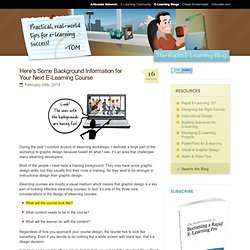

- Five Reasons I'm Not Flipping Over The Flipped Classroom. 0 Comments November 8, 2011 By: Lisa Nielsen Nov 8 Written by: 11/8/2011 3:38 AM ShareThis If you've read my thoughts about the Flipped Classroom in USA Today, you probably are either in agreement with my caution over the excitement around the flipped classroom made popular by Sal Kahn or you are a flipped classroom advocate who wants to convince me and other innovative educators that flipping is for everyone.

While I certainly see benefits in flipping instruction as I wrote about earlier this year, there are also reasons to move ahead with caution. Here's Why: We have yet to bridge the digital divide... While there's no doubt that flipping is preferable to sending kids off on their own to make meaning of lectures, without questioning that type of pedagogy in the first place, we are doing our children a disservice. If you want to keep the Flipped Classroom conversation going, in addition to commenting here, you can join the Flipped Class Network. Harvard Education Letter. Since she began ‘flipping’ lectures and homework assignments, high school science teacher Shelley Wright has noticed something: the number of students failing her course has dropped from the usual three to zero.

Departmental exam scores are higher, too. Wright, who teaches grades 10, 11, and 12 at Cornerstone Christian School in Moose Jaw, Saskatchewan, is one of a growing number of converts to the practice of inverting—or flipping—the daytime class lecture, on the one hand, and nighttime reading and problem-solving homework, on the other. When Wright teaches, she introduces a topic in class through activities or groupwork, and then asks students to watch a related lecture from the not-for-profit tutorial creator Khan Academy or from the TED conference website for homework. Instead of filing into the class the next day for a lecture, students are prepped to apply what they’ve learned. * Day 1 – Exploring: Students first explore the material with an activity building on prior knowledge. Let's Flip! Building%20Effective%20Blended%20Learning%20Programs. Flipping Blooms Taxonomy.
Teacher Shelley Wright is on leave from her classroom, working with teachers in a half-dozen high schools to promote inquiry and connected learning.

I think the revised Bloom’s Taxonomy is wrong. Hear me out. I know this statement sounds heretical in the realms of education, but I think this is something we should rethink, especially since it is so widely taught to pre-service teachers. I agree that the taxonomy accurately classifies various types of cognitive thinking skills. It certainly identifies the different levels of complexity. Old-school Blooms: Arduous climb for learners Conceived in 1956 by a group of educators chaired by Benjamin Bloom, the taxonomy classifies skills from least to most complex. Many teachers in many classrooms spend the majority of their time in the basement of the taxonomy, never really addressing or developing the higher order thinking skills that kids need to develop. Here’s what I propose. Blooms 21: Let’s put Creating at the forefront. Here’s Some Background Information for Your Next E-Learning Course. During the year I conduct dozens of elearning workshops.

I dedicate a large part of the workshop to graphic design because based on what I see, it’s an area that challenges many elearning developers. Most of the people I meet have a training background. They may have some graphic design skills, but they usually find their roots in training. So they tend to be stronger in instructional design than graphic design. Elearning courses are mostly a visual medium which means that graphic design is a key part of building effective elearning courses.
What will the course look like? Regardless of how you approach your course design, the course has to look like something. In today’s post I want to offer a simple trick to help you get past the standard PowerPoint design or that template-screen look. Change Your Background Image It’s amazing what a nice background can do for the look of your screen. Many rapid elearning developers will use the application’s default background or a pre-built template.